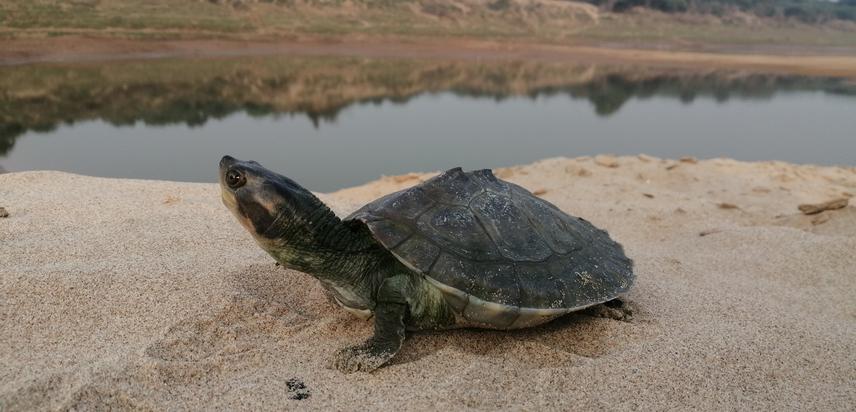Pawan Shantiprakash Pareek
With less than 500 adult females, Chambal River in Northern India is the last natural home of Red-crowned Roofed Turtle (Batagur kachuga). This project focus to provide decisive ecological information on a suite of habitat factors that influence the movement of female B. kachuga to particular sand banks and aid in nest-site selection compared to random sites and how these microhabitat components affect nesting success, hatchling fitness and sex ratio.

Batagur kachuga juvanile. © Pawan S Pareek
The findings of this research would not only aid the better understanding on what habitat requirements provide for successful and non-successful nesting events/habitats but will also address the knowledge gap by providing crucial information on nesting ecology of the species, and their habitat needs to Inform management decisions and concerted conservation actions/interventions for conservation of B. kachuga and its last stronghold in the wild. Additionally, information on the effect of incubation temperature on hatchling’s fitness and sex ratio will help to strengthen the captive breeding and assurance colonies in the region towards the recovery of this charismatic species.
Header: Habitat of B. kachuga. © Pawan S Pareek